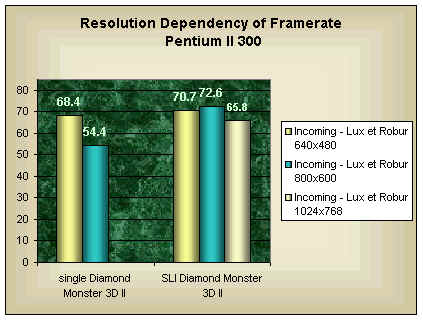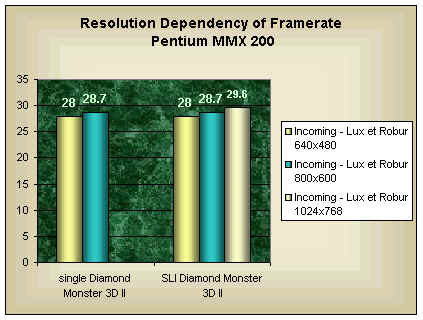The Influence of CPU on Voodoo 2 Performance
Introduction
The easiest way of finding out if the CPU feeds data to the Voodoo² fast enough is comparing game frame rates at different resolutions. A higher resolution requires more rendering work for the 3D chip whilst not being any more work at all for the CPU. Hence you should expect a drop in frame rate as long as the 3D chip is the determinant factor. If there is no drop in frame rate, it shows that the 3D chip has got enough time for rendering at the higher resolution while waiting for data being delivered from the CPU.
Rage's Incoming, 'Lux Et Robur' Benchmarking Suite
Incoming is a great looking game that is pretty complex. Hence it requires a lot of calculations done by the CPU.
You can see a drop in frame rate in a system with a Pentium II 300 when using a single Voodoo² board. However there's no drop at all, actually even a slight increase in frame rate when switching form 640x480 to 800x600 when running two Voodoo² boards in SLI. This shows that even a Pentium II 300 is not able feeding the Voodoo² with enough data at 640x480. It requires a CPU that's significantly faster than this one.
A Pentium MMX 200 hasn't got the slightest chance of supplying the Voodoo² with enough geometry data even in case of only a single Voodoo² board. It's actually quite surprising that there's even a slight increase in frame rate when switching to higher resolutions, but this is most likely due to the special benchmark.
Get Tom's Hardware's best news and in-depth reviews, straight to your inbox.

